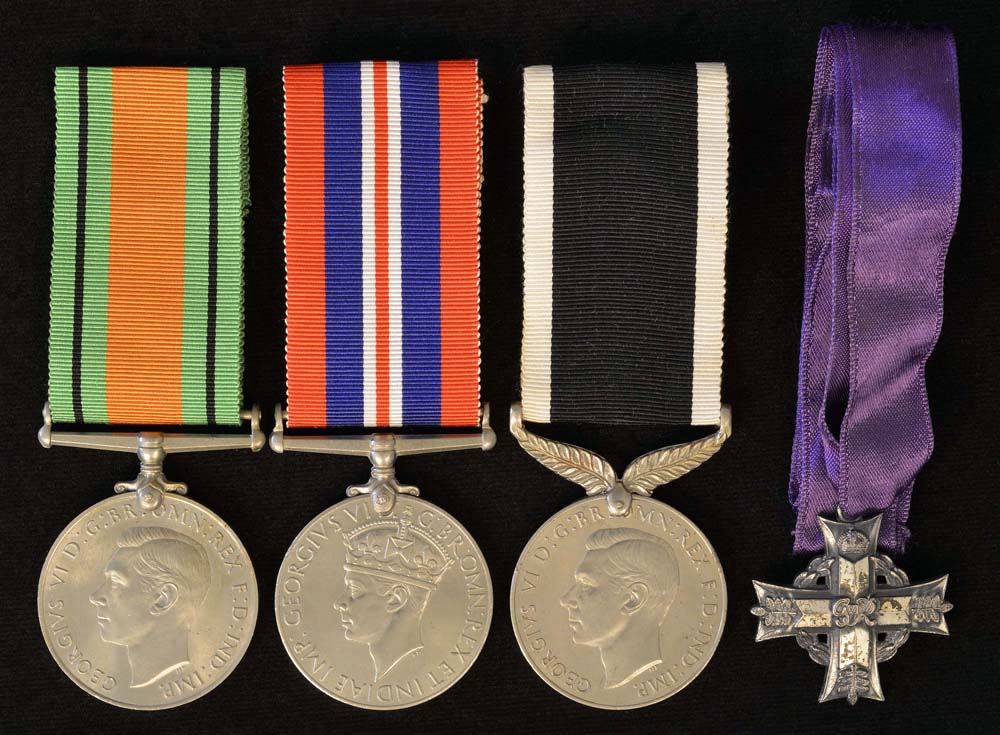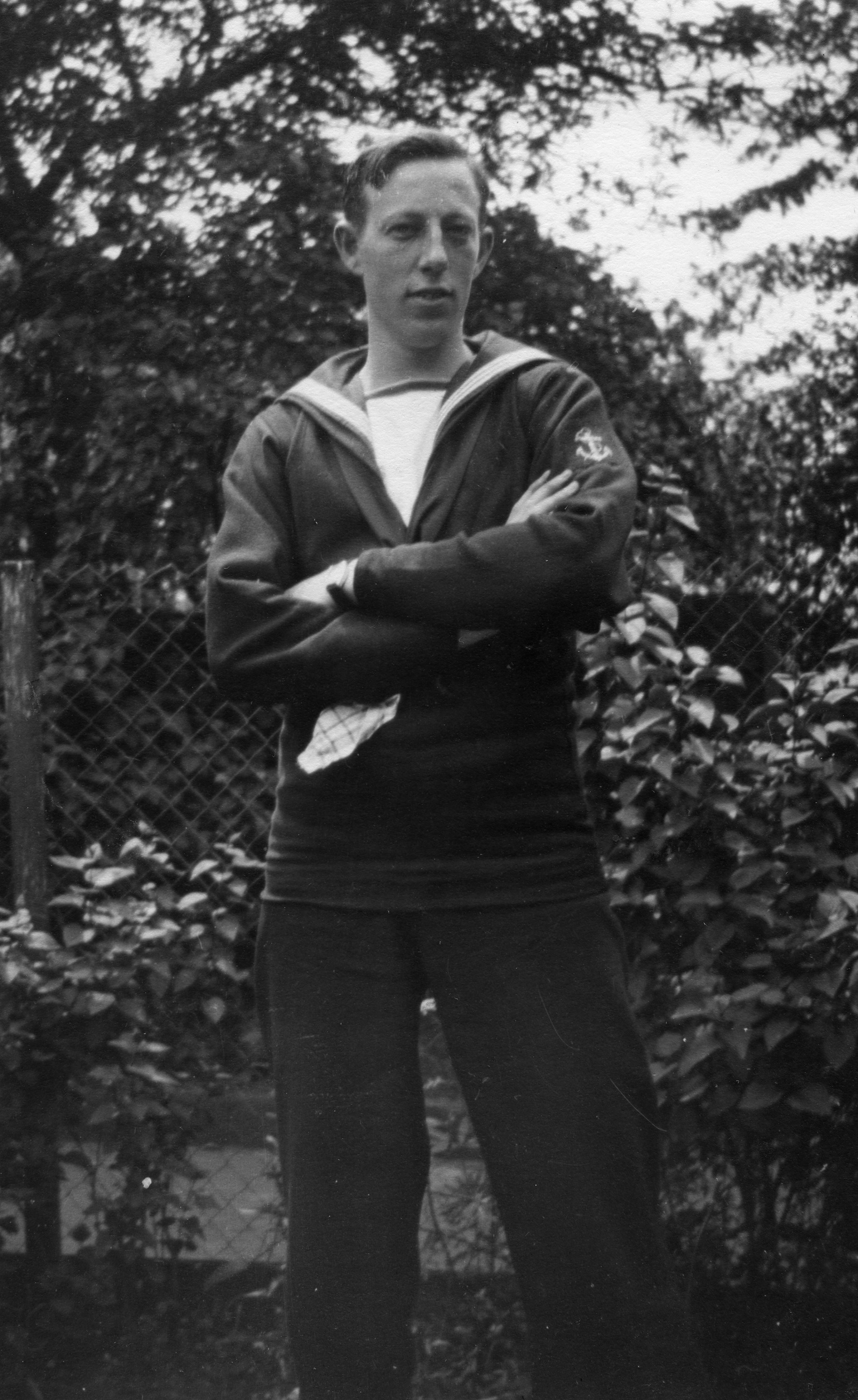

Display No. 17A
INGLE, Ewan Seymour
Ewan Ingle served in the Fleet Air Arm during the Second World War. Initially, Ingle volunteered for service with the Royal New Zealand Air Force (RNZAF) and was put on a waiting list for flight training. During the waiting period he applied to join the Fleet Air Arm (FAA), and he was accepted into the 3rd Scheme F Draft and sailed for England on the 14th September 1940. Upon reaching England, he was sent to the training establishment HMS St Vincent to join 22 Pilots Course, and completed the elementary flying training course. In June 1941, he commenced the service flying training course at 1 Service Flying Training School at Netheravon in Wiltshire. On the 19th August 1941, Ingle was killed during a training exercise when the plane he was a passenger in hit high-tension wires and crashed. He is buried at Luton Church Burial Ground, Bedfordshire, England.
Awarded medal(s)
Medal Description [Left to Right]:
The Defence Medal
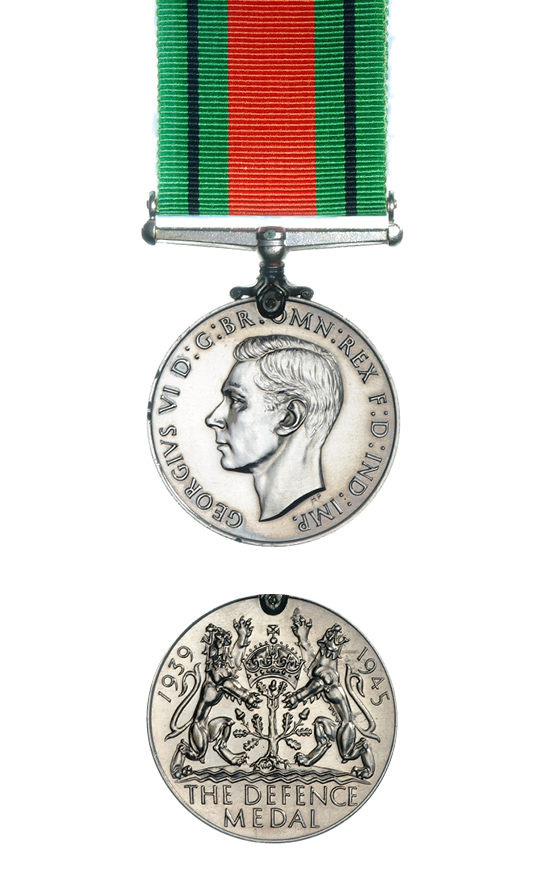
The Defence Medal was awarded to British and Commonwealth forces who served during the Second World War. It was awarded to New Zealand military personnel who served overseas in a non-operational area such as Great Britain, Palestine or Fiji. The ribbon’s flame-coloured orange centre band and green edge bands symbolise enemy attacks on Britain’s green and pleasant land. The narrow black stripes represent the black-outs against enemy air-attacks.
The War Medal 1939-1945

The War Medal 1939-45 was awarded across the British Commonwealth to all full-time members of the Armed Forces in the Second World War for 28 days service between 3 September 1939 and 2 September 1945, irrespective of where they were serving. The ribbon is the red, white, and blue of the (British) Union Flag. There is a narrow central red stripe with a narrow white stripe on either side. There are broad red stripes at either edge, the two intervening stripes being blue.
A bronze oak leaf on the medal ribbon denotes that the recipient was Mentioned in Despatches. To be Mentioned in Despatches a member of the armed forces had their name mentioned in an official report, written by a superior officer, and sent to a higher command. The report would describe the individual’s gallant or meritorious action in the face of the enemy.
The New Zealand War Service Medal
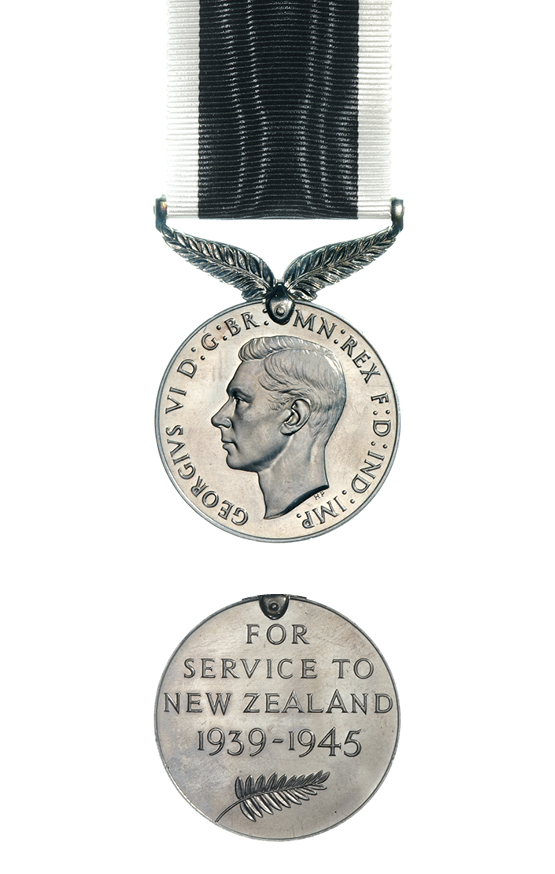
The New Zealand War Service Medal was awarded for 28 days’ full time service or six months’ part time service in the Second World War in any of the New Zealand Armed Forces including the Reserves, Naval Auxiliary Patrol Service, or Home Guard, between 3 September 1939 and 2 September 1945.
The New Zealand Memorial Cross
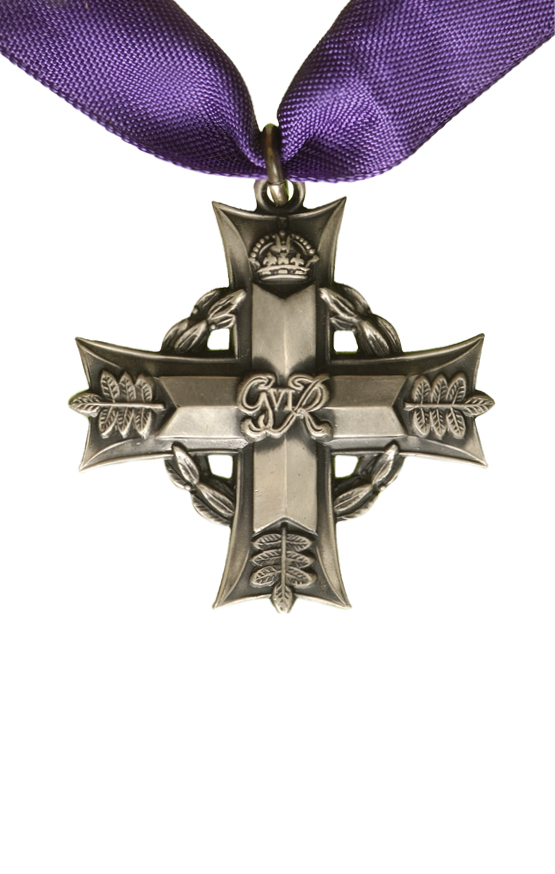
The New Zealand Memorial Cross is awarded to the next of kin of all New Zealand servicemen and women who were killed, while on war service or operational service overseas in the Second World War. It is also awarded to the next of kin of those who subsequently died of wounds received while on war service, or operational service overseas, since the commencement of the Second World War. For deaths during the Second World War the first cross was awarded in the late 1940s or the 1950s to the mother. If the mother was deceased, the first cross was awarded to the father, or if he was also deceased, to the eldest sister, or the eldest brother if the military service person had no living sisters. A second cross was awarded to the widow, eldest daughter or eldest son (in that order of precedence). If the deceased military service person was not married, and had no children, only one Memorial Cross was issued. It is worn on a purple ribbon around the neck.

